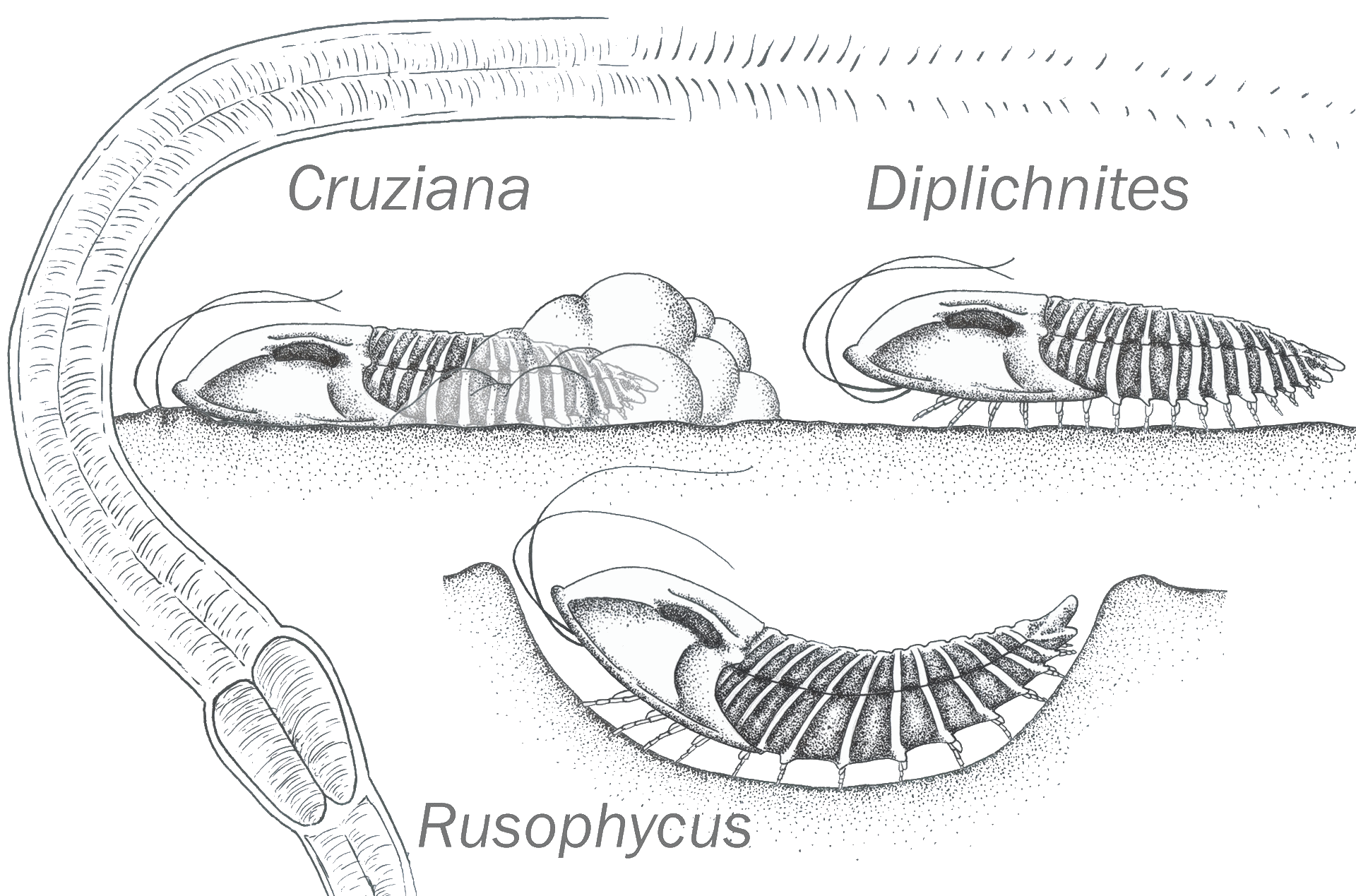Trilobite Tracks
|

 Trilobite fossil on a shale slab sold on EBay We have no idea where it came from. (or for that matter where it went) |
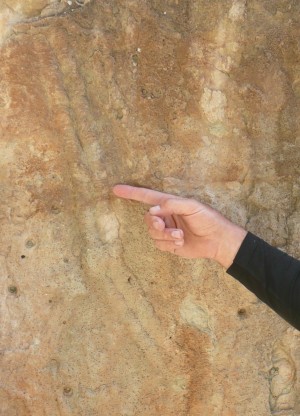 Cruziana in outcrop (Tapeats Sandstone) |
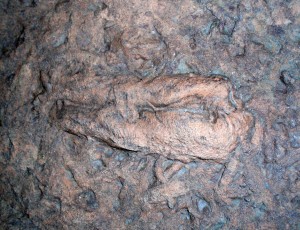 Rusophycos in outcrop Both left and above: Specimens from the Cambrian Tapeats Sandstone, on the Deer Creek Falls Trail, Grand Canyon, Utah. The trace fossils are exposed beneath ledges that stick out along the trail. |
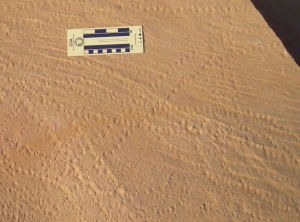 Diplichnites in outcrop Cambrian Elk Mound Group, Wisconsin. Trilobites can make traces like these also, but we did not see any in the Grand Canyon. (photo from Wikipedia) |
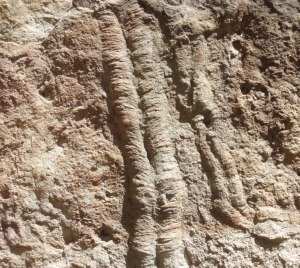 Cruziana (Tapeats Sandstone) |
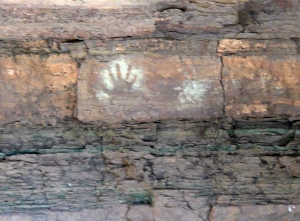 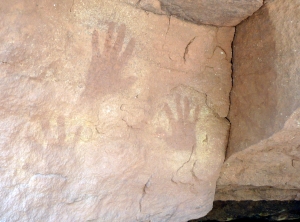
Technically most geologists would not consider Indian Pictographs to be trace fossils. On the other hand though, they do represent traces of life from the distant past. These are found near the trace fossils in the Cambrian Tapeats Sandstone. |
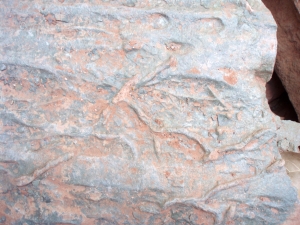 Thalassinoides (Tapeats Sandstone) The odd depressions in the upper right corner may be another trace fossil of some sort. |
|

